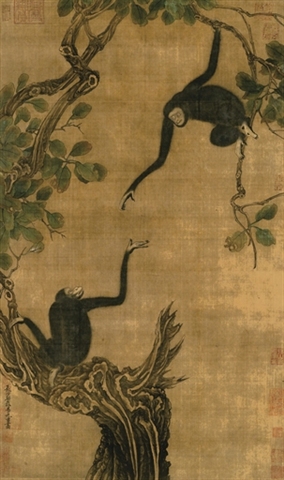Adaptation
The Nomascus hainanus has been evolving a long time to be able to have developed at the extent they have. There are many branches of the phylogenic tree that have resulted from these adaptations. The gibbons in general have adaptations that are the same as great apes and humans, which differentiate them into a new branching. These can include being diurnal, arboreal, of frugivorous (Thinh Biol 2010). Further into the phylogenic tree, after the branching occurred for the six species of the Nomascus, the adaptations that separate them are mainly accounted for in their songs. The songs have become specific enough to deter any interbreeding between the species. To hear some of these songs and additional images of the gibbon, click here. For the Nomascus hainaus, the song has developed to include male-dominated and non-mated gibbons (Reppell 2010). Several other adaptations for the Nomascus hainanus can be accounted for.
Another adaptation that the Nomascus hainanus has evolved is
their fur. Fur on the males of this species is more dense and
short than the other species that include upright hair on the
male’s head (Thinh Biol 2010). The fur color has become detailed
for different stages of the gibbon’s life. The young offspring
of the Nomascus hainanus have a fur color comparable to the
females, yellow, orange, or brown, but once they grow to
maturity, the males will develop a new color, black (Thinh Biol
2010). This adaptation can help with communication between the
gibbons to know who is ready to begin producing offspring. These
offspring, along with their parents, have genetic variation to
the other gibbon species.
The Nomascus, have genetic differences compared to the other
gibbons. The Nomascus are diploid with 52 chromosomes (Thinh
Biol 2010). This is not the only genetic adaptation they
acquire. They also contain a distinct mitochondrial cytochrome b
gene. The gene has a pattern which branches (Thinh Biol 2010).
The branching design is different than the other species of
gibbons. These differences have given continued life to the
Nomascus hainanus and the adaptations will grow to be able to do
so.
Figure 6. This shows two gibbons in their tall trees that they use as homes. From Wikipedia 2014. Originally painted by Yi Yuanji titled, "Two Gibbons in an Oak Tree" from the 11th century.
Click here to continue to the
next topic on what the gibbon eats or return to the
homepage.
